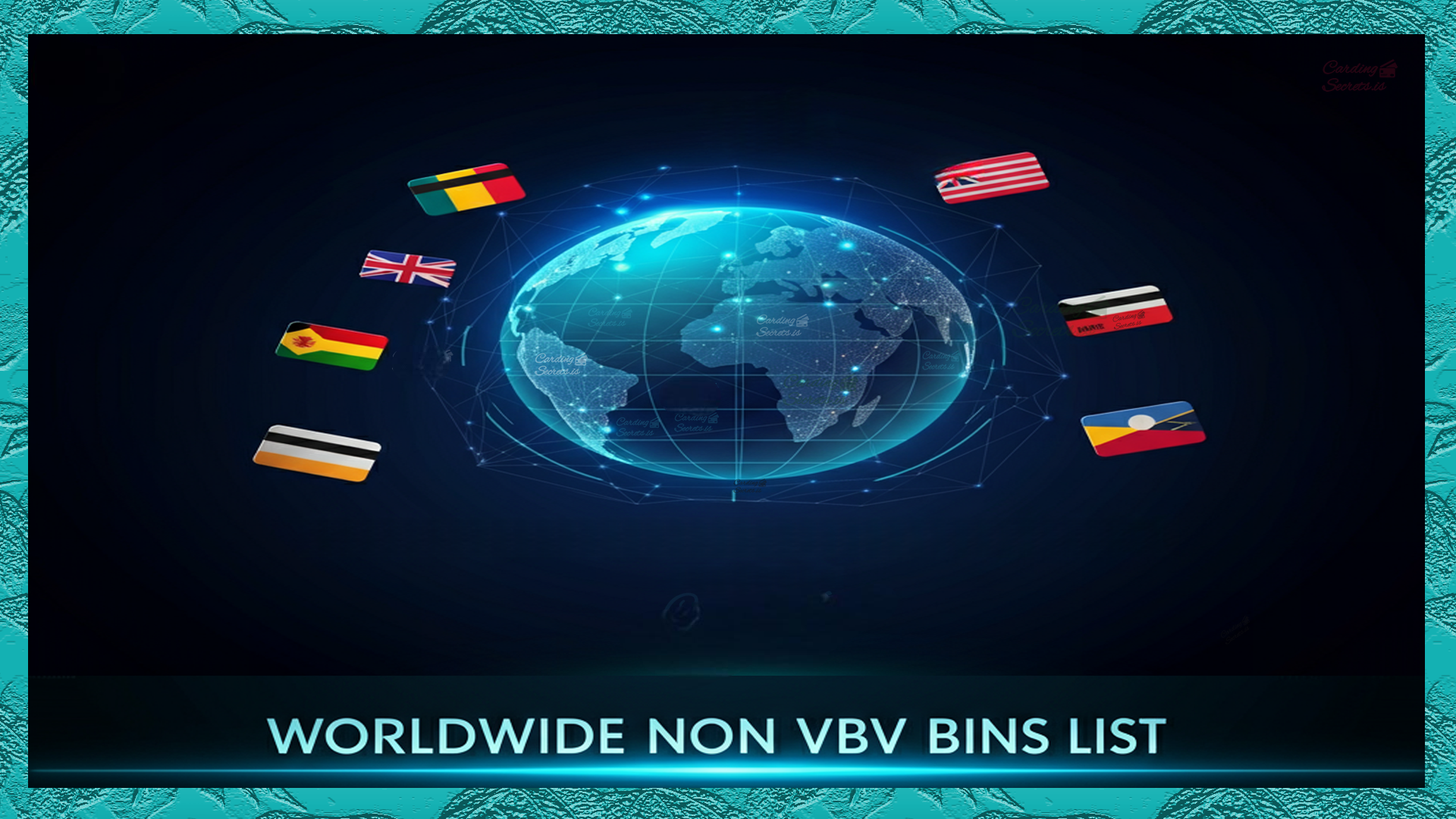
Product Details
Explore the Updated Worldwide Non VBV BINs List of 2025! Tested on 300+ carding methods featuring live Non-VBV BINs from 15+ countries. Reliable, filtered, and trusted—check it out now!
Welcome to the Updated Worldwide Non VBV BINs List of 2025! As the digital payment landscape continues to evolve, so too do the opportunities for carders to exploit its weaknesses. In this post, we will provide you with the latest Non VBV BINs List for your country! Enabling you to tap into the lucrative world of non vbv cc carding and maximize your profits.
3D Security (Vbv/Msc)
3D Security, also known as 3D Secure, is a security protocol implemented by payment processors to protect against fraudulent transactions. It adds an extra layer of authentication to the payment process, requiring cardholders to provide additional information, such as a password or a one-time code, to verify their identity. There are several types of 3D Security used in carding:
- Verified by Visa (VbV): This is a 3D Security protocol used by Visa. During the checkout process, the cardholder is redirected to a secure page hosted by Visa, where they are prompted to enter a password or a one-time code sent to their registered mobile number. Once the authentication is successful, the transaction is approved.
- Mastercard SecureCode (MSC): This is a 3D Security protocol used by Mastercard. Similar to VbV, during the checkout process, the cardholder is redirected to a secure page hosted by Mastercard, where they are prompted to enter a password or a one-time code sent to their registered email address. Once the authentication is successful, the transaction is approved.
- American Express SafeKey: This is a 3D Security protocol used by American Express. During the checkout process, the cardholder is prompted to enter a password or a one-time code sent to their registered mobile number. Once the authentication is successful, the transaction is approved.
- JCB J/Secure: This is a 3D Security protocol used by JCB. During the checkout process, the cardholder is prompted to enter a password or a one-time code sent to their registered email address. Once the authentication is successful, the transaction is approved.
- Discover Secure: This is a 3D Security protocol used by Discover. During the checkout process, the cardholder is prompted to enter a password or a one-time code sent to their registered mobile number. Once the authentication is successful, the transaction is approved.

Currently the only way to bypass OTP (2fa sms) is with an OTP bot, we covered the top 3 OTP bots .
Each of these 3D Security protocols adds an extra layer of authentication to the payment process, making it more secure and reducing the risk of fraud.
However, Non VBV BINs, which do not require verification of the cardholder’s presence or involvement in the transaction, are not subject to 3D Security, making them more susceptible to fraudulent activities. By focusing on Non VBV BINs, carders can bypass these security measures and carry out fraudulent transactions without the need for a CVV or CVC.
Understanding Non Vbv CC’s
What is a non VBV card, and why should I care?
A non-VBV card is a card that does not have a Verified by Visa (VBV) or Mastercard SecureCode (MSC) security feature. These cards are generally easier to exploit because they do not require additional 3D Security authentication such as 2 Factor Authentication sms during the checkout process (although you can bypass this with an OTP bot it is faster to just skip using vbv cards).
As a carder, you should care about non-VBV cards because they offer a higher success rate when making unauthorized transactions and they save you time.
Why Non VBV BINs List matters for profit?
Non VBV BINs offers several advantages for carders:
- Lower risk of detection: Since these BINs have weaker security protocols, they are less likely to trigger fraud alerts, reducing the risk of getting caught.
- Higher success rate: Non VBV BINs are generally easier to exploit, resulting in a higher success rate for unauthorized transactions.
- Wider range of targets: With Non VBV BINs List, you can target cards from specific issuing banks or countries that may have weaker fraud detection systems, as well as prepaid cards that often fly under the radar.
Mastering Non VBV BINs:
To make the most of Non-VBV BINs, follow these strategies:
- Use fresh lists: Overused Non VBV BINs lists can get flagged and blacklisted, making them less effective for carding. To stay ahead of the game, use fresh lists and rotate your targets frequently.